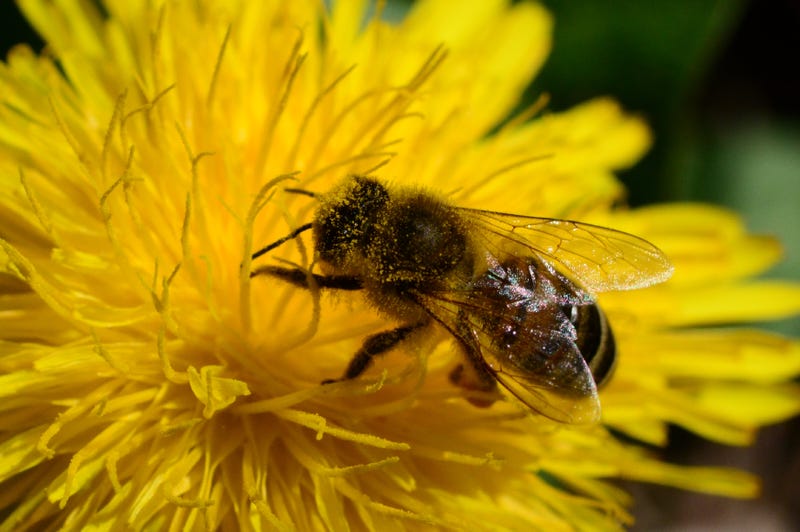
Researchers at Washington State University have been monitoring challenges honeybees face for nearly 20 years, and they said this year could be one of the worst ones for the important pollinators in decades.
However, they have also been working to create robot bees to help with pollination. KCBS Radio’s Holly Quan spoke with Ryan Bena, a PhD student at the University of Southern California and co-author of the study about the project.
“Essentially we built this this robot – it’s about 95 milligrams,” he explained. “So it’s roughly the size of... an actual insect bee. And we use flapping wings. So for flapping wings to fly and control the bee, you know, fly through the air… what’s unique and sort of interesting about our particular robot is that we finally developed a way to coordinate the flapping of these four wings so that we can control the bee in every direction.”
According to WSU, Honey bees are the primary pollinator for many fruit and seed crops in the state of Washington. These insects face environmental challenges such as “Colony Collapse Disorder,” which beekeepers and bee researchers have attributed to the introduction of the Varroa mite.
A press release from WSU said that the robotic bee consists of four wings made out of carbon fiber and mylar as well as four light-weight actuators to control each wing. It is the first prototype of its kind to fly in all directions.
This model is the results of more than 30 years of research into making artificial flying insects.
“Historically, it’s been difficult to control the twisting motion of these robots, and we were able to solve that problem and figure out a way so that we can now twist and control the robot however we want so it can fly around like a real insect,” said Bena.
Authors of the study about the project, which was published this April in the IEEE Transactions on Robotics journal, hope that the robots will be able to “be used for many applications, including for artificial pollination, search and rescue efforts in tight spaces, biological research, or environmental monitoring, including in hostile environments,” in the future.
Bena said the robot bees are similar to drones, but “maybe a thousand times or a thousand times lighter of a weight.”
Néstor O. Pérez-Arancibia, Flaherty associate professor in WSU’s School of Mechanical and Materials Engineering, was the leader of the research team. He presented the results at the IEEE International Conference on Robotics and Automation at the end of May.


